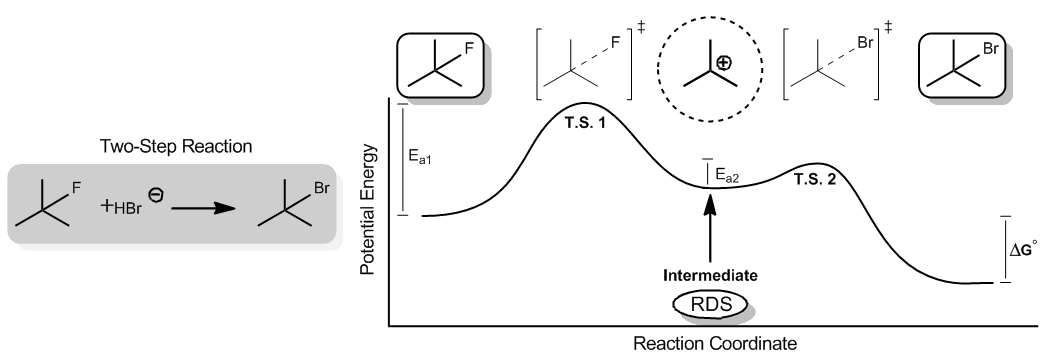We know that the thermodynamics or spontaneity of a reaction is directly related to the Gibbs free energy. So, it's going to be really important that we understand how to break down the Gibbs free energy equation and know how to use it. All right. So in this video, I'm going to describe every term and help you guys see how it relates to reactions.
The first thing, going all the way back, Gibbs free energy, or ΔG, is going to predict the favorability of the reaction. Remember that another word for favorability is spontaneity. It's comprised of 3 terms: ΔH, ΔS, and T. I want to go through each one, one at a time, and talk about what they mean.
ΔH is the enthalpy. Enthalpy can get confusing because ΔH and ΔG are often the same. Many times, if you have a negative enthalpy, you'll also have a negative spontaneity, and many students get confused, thinking that they're actually the same thing. They're not. ΔH is just one component of the spontaneity, but we also have to take into account the temperature and ΔS. So let me start right there.
What is the enthalpy? It's simply the sum of the bond association energies for the reaction. What that means is I'm going to be making bonds, I'm going to be breaking bonds. All of those actions require that I'm putting in energy or I'm receiving some energy. When I add all those together, whatever my final number is, that's my enthalpy. And later on we're going to learn how to actually add and subtract that stuff. But for right now, I'm just trying to tell you guys the big picture.
If something has a negative enthalpy, a negative ΔH, that's what happens when you make bonds. When you make bonds, you are getting some energy back. Why? Because I already taught you guys, I showed you in the free energy diagram how you could gain energy by putting two atoms together. That's what we call exothermic. Exothermic doesn't always mean that the reaction is favored. Remember, favorability has to do with exergonic or endergonic, but it is one component of it.
Well, what if your enthalpy is positive? If it's positive, that means I’m breaking bonds because it requires energy to break bonds. Once you break bonds, that’s going to be endothermic because of the fact that it requires that I'm putting energy into the system to make those atoms separate.
Now let's talk about one that's actually a little more difficult to understand: the entropy, ΔS. Entropy is a measure of disorder in the system. This can seem very confusing because it's like, how does the system know how disordered it is? I'm going to explain this in more depth later when I actually talk about entropy all on its own. But for right now, I just want you guys to know what the signs mean. If it's negative entropy, that means that I'm going to a more ordered state. Entropy means how disordered something is, so the opposite of disordered is ordered. If it's positive, that means it’s more disordered. A state always wants to be in its most disordered arrangement possible, so that's going to be a good thing. So, when ΔS is positive, that means my reaction is going to be a little more favored. Hopefully, you guys understand that negative means ordered, positive means disordered, and positive is the one that is actually favored.
Finally, we have our last variable, which is temperature, and note where temperature is in the equation. Temperature is going to be a coefficient of ΔS. What that means is that as temperature goes up, it's going to amplify the effect of entropy on my overall favorability. As I increase the temperature of my reaction, the entropy of the reaction is going to matter a whole lot more in determining the overall fate of my reaction, whether it's going to be favored or not. On the other hand, as I reduce my temperature down to 0 Kelvin or absolute zero, it's going to mean that my entropy becomes less and less important. Eventually, as you approach absolute zero, entropy doesn't matter at all anymore because there's actually no more movement, and all that matters is the heats of dissociation. That's kind of theoretical, but I hope that makes sense to you guys. We're going to be learning and talking about that more later when we discuss entropy all on its own.




